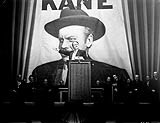The director’s cut
The British Film Institute is going through a period of upheaval and evaluating its 69-year-old brand. Hannah Booth meets the man in charge, Jon Teckman

Jon Teckman is determined to play down the colourful side of his role as chief executive of the British Film Institute. As he recounts the time he visited Martin Scorsese’s Gangs of New York set to meet the director and watch Leonardo DiCaprio wrestling with Daniel Day Lewis, it’s difficult to believe him, though.
To be fair, he tells the story to illustrate the pull the BFI has abroad. Scorsese had missed their scheduled appointment, but was so keen to meet Teckman, he invited him to the set. No British director of Scorsese’s magnitude, he reasons, would have put himself out thus. Addressing this issue is high on Teckman’s agenda.
‘We are a venerable organisation, particularly overseas,’ he says. ‘But we need to make some changes. For a start, our name doesn’t really describe what we do. We’re not just British, we work abroad; we cover television as well as film; and “institute” has fusty, academic overtones.’
Teckman’s starting point has been to hire Wolff Olins to conduct a major review of the BFI brand (DW 20 June). Initially, it is looking at the way the organisation works, which may or may not lead to a new name and identity.
Part of Wolff Olins’ challenge is to draw together the BFI’s activities and brands. It runs the National Film Theatre as well as an archive, a library, publishing and distribution arms, a video and DVD label and a website, which is ‘vital to engage with people’. Then there’s London’s Imax cinema, along with the Museum of Moving Image and film magazine Sight and Sound.
The magazine, which celebrates its 70th birthday this year, has been completely redesigned by August Media.
Teckman is keen to involve staff in Wolff Olins’ work. The group met employees to explain its work and counter alarm bells ringing about sweeping brand reforms.
‘[The branding programme] is a big step and we won’t be changing our name for the sake of it,’ he says. ‘The image of design has been damaged by high-profile cases and satirised in the media, but that’s because people don’t understand the work that goes into it.’
Overall, the BFI’s role is to widen the ‘understanding and appreciation of film’, not just to movie buffs, but anyone interested in film, particularly the younger generation. ‘The 14 to 24 age group is not generally exposed to classic cinema and has no reference points in cinema history. Our job is to create opportunities for them to see such films,’ Teckman says.
People assume that young people aren’t interested in older films, but you can engage them, he says. ‘If you sat a group of 6to 12-year-olds in front of a Charlie Chaplin film, they would probably love it. If you told them they were going to watch a black and white silent movie, they’d run a mile.’
Activities such as exhibitions and film polls help get the message cross. The BFI’s Moving Pictures show, created by Land Design Studio, has just finished a run in Sheffield and is on the lookout for a new temporary home. And this month’s top ten critics’ and directors’ polls surprised no-one, least of all Teckman, when Citizen Kane topped both polls. ‘It’s still a very innovative film, but it is strange nothing in the past 20 years made it on to the list,’ he says.
Despite this good work, a fundamental shift in the way film is perceived is still much-needed, he says. ‘Film is seen as entertainment, not as a wider experience. There is a lack of appreciation of it as an art in this country compared with, say, theatre. Part of the problem is it is such a young art form – it’s only been around a century.’
It’s not just the BFI’s brand that’s being looked at. A question mark still hangs over its future home. It is looking at housing all its spaces together as a film centre, to be designed by architect David Chipperfield. These are currently dispersed along London’s South Bank and Oxford Street as well as Berkhamsted, and mooted locations have included a site near Tate Modern.
One thing is for sure, the NFT will be in its current home for at least five years. It is undergoing a short term ‘sprucing up’ by architect Dean Buchanan in time for its 50th birthday in October.
‘The NFT has been located under Waterloo Bridge for 45 years, so people are attached to it, but it’s difficult to get to and invisible compared with other landmarks nearby,’ he explains.
Teckman speaks knowledgeably about film, but claims to be no expert. ‘My friends, and people outside the BFI, see me as a buff, but I’m not. In this way, I’m our target market, so it’s certainly no handicap,’ he says. He was a civil servant for 14 years, where his last post was in the films policy division, and from there was ‘part head-hunted’ to join the BFI as deputy director.
He will be incommunicado for a few days, he says, as he’s off to the Edinburgh Film Festival. Not quite the Mean Streets of New York’s Queens, but then you don’t meet Scorsese every day.
Jon Teckman’s CV
1984 After Warwick University joined the civil service. Roles included head of film and audio-visual sponsorship at the Department for Culture, Media and Sport, and he also worked on the introduction of The National Lottery
1998 Joined British Film Institute as deputy director
1999 promoted at BFI to director and title later changed to chief executive
-
Post a comment



